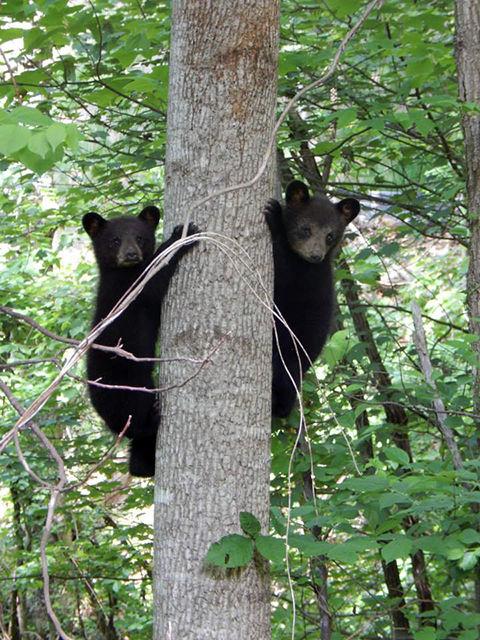Bear tracks have gone digital in a joint project between NC State and the North Carolina Wildlife Research Commission. In 2014, the five-year North Carolina Urban/Suburban Bear Study began research in Asheville.
Being the first of its kind in the Southeast, the study focuses on bear activity in and around Asheville, monitoring and tracking black bear activity though GPS collars. The data gives insight to the lives of the bears, encourages positive perception and enables coexistence between bears and people.
“We have learned that bears are all over Asheville,” said Nicolas Gould, field study coordinator and graduate research associate in fisheries, wildlife and conservation biology. “We have seen bears choose den sites very close to houses, roads and neighborhoods … By examining the movements and habitat use of bears in an urban/suburban environment, the NCWRC can identify and conserve important travel corridors.”
For the study, bears are trapped, sedated and fitted with a collar if they are large enough to wear one comfortably. To date, 122 bears have been tagged in the study, the majority of which are tagged within city limits and on private residential property.
The collar is designed with three mechanisms for removal so that in case it is not manually removed, it is outgrown or another problem arises, the bear will not be stuck with the collar for the rest of its life. First, the same GPS that tracks it can implement a collar release. Second, the collar is held by a degrading link, which is designed to dissolve in about a year and a half. If neither of those works, a three-year timer releases the collar.
The process lends itself to tagging familial groups, allowing the research team to “examine family dynamics, family break-up and obtain dispersal information on the yearlings when they leave mom in late spring,” Gould said. Additionally, the collars help researchers monitor reproductive patterns and den locations, creating further understanding of the urban factors that influence these patterns.
In Asheville, the bears’ locations are reported every 15 minutes, building a map of the most heavily used “travel corridors.” Though the bears are not inherently aggressive toward humans, this information can be used to reduce contact and conflict between humans and bears by diminishing the proximity between the two.
Population pressures — from humans and bears alike — are sure to make more precautions necessary. The increasing human population encroaches on bear territory, and simultaneously, bears are lured to urban and suburban areas by the promise of full garbage cans and birdfeeders. Unsurprisingly, well-fed bears have higher fertility rates, leading to the expansion of an urban/suburban bear population.
“There are pretty much bears everywhere,” said Mike Carraway, wildlife biologist with NCWRC and the bear study.
The presence of an active black bear population in Asheville has been relatively well known, Gould said, “But [it’s] really nice to have some data behind it.”
A better understanding of the habits of black bears in a metropolitan setting is crucial to encouraging positive relations.
“The residents show a lot of support for the project and living with bears,” Gould said. “Their involvement has enabled us to incorporate citizen science into our project. It would not be the success it has been so far without their help.”
The study will be followed by continued tracking and data analysis in 2017-2018. Though current data is preliminary, the study has already provided information concerning human proximity, movement patterns and mortality vulnerability in the urban and suburban bear populations.
“Bears have adapted to people now living in bear country, so we hope people can adapt to living with their bear neighbors,” Gould said.
Bears have adapted to people now living in bear country, so we hope people can adapt to living with their bear neighbors.









